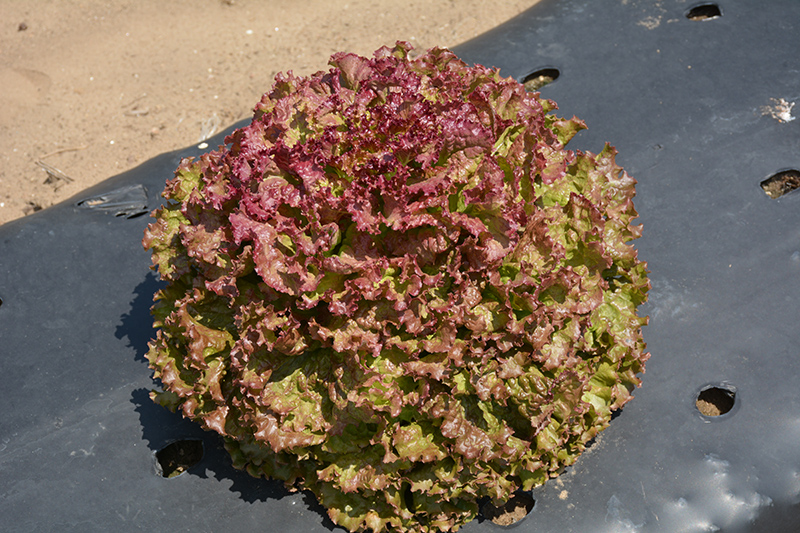New Red Fire Lettuce
Lactuca sativa var. crispa 'New Red Fire'
Height: 10 inches
Spacing: 10 inches
Sunlight:
![]()
![]()
Hardiness Zone: (annual)
Description:
Beautiful for edging, patio containers and gardens, this slow to bolt variety produces gorgeous compact rosettes of green and burgundy crinkled leaves; mild and tender, great for salads and sandwiches
Edible Qualities
New Red Fire Lettuce is an annual vegetable plant that is commonly grown for its edible qualities. The crinkled lobed green leaves with distinctive dark red edges are usually harvested from mid spring to early fall. The leaves have a sweet taste and a crisp texture.
The leaves are most often used in the following ways:
- Fresh Eating
- Eating When Cooked/Prepared
Planting & Growing
New Red Fire Lettuce will grow to be about 10 inches tall at maturity, with a spread of 6 inches. When planted in rows, individual plants should be spaced approximately 10 inches apart. This vegetable plant is an annual, which means that it will grow for one season in your garden and then die after producing a crop. Because of its relatively short time to maturity, it lends itself to a series of successive plantings each staggered by a week or two; this will prolong the effective harvest period.
This plant is typically grown in a designated vegetable garden. It does best in full sun to partial shade. It does best in average conditions that are neither too wet nor too dry, and is very intolerant of standing water. It may require supplemental watering during periods of drought or extended heat. It is not particular as to soil pH, but grows best in rich soils. It is quite intolerant of urban pollution, therefore inner city or urban streetside plantings are best avoided. This is a selected variety of a species not originally from North America.; however, as a cultivated variety, be aware that it may be subject to certain restrictions or prohibitions on propagation.
New Red Fire Lettuce is a good choice for the vegetable garden, but it is also well-suited for use in outdoor pots and containers. It is often used as a 'filler' in the 'spiller-thriller-filler' container combination, providing the canvas against which the thriller plants stand out. Note that when growing plants in outdoor containers and baskets, they may require more frequent waterings than they would in the yard or garden.

